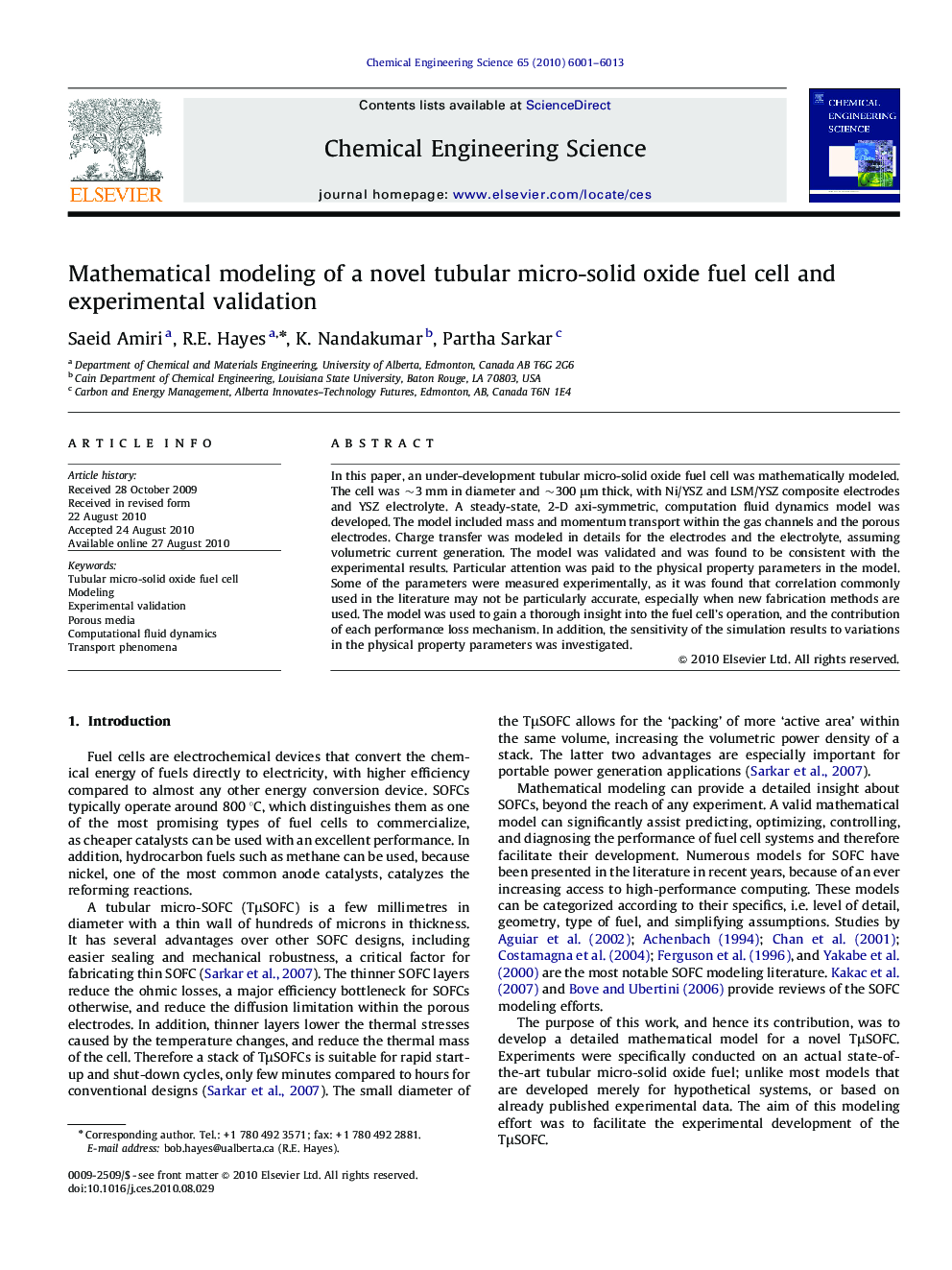| Article ID | Journal | Published Year | Pages | File Type |
|---|---|---|---|---|
| 157122 | Chemical Engineering Science | 2010 | 13 Pages |
In this paper, an under-development tubular micro-solid oxide fuel cell was mathematically modeled. The cell was ∼3 mm in diameter and ∼300 μm thick, with Ni/YSZ and LSM/YSZ composite electrodes and YSZ electrolyte. A steady-state, 2-D axi-symmetric, computation fluid dynamics model was developed. The model included mass and momentum transport within the gas channels and the porous electrodes. Charge transfer was modeled in details for the electrodes and the electrolyte, assuming volumetric current generation. The model was validated and was found to be consistent with the experimental results. Particular attention was paid to the physical property parameters in the model. Some of the parameters were measured experimentally, as it was found that correlation commonly used in the literature may not be particularly accurate, especially when new fabrication methods are used. The model was used to gain a thorough insight into the fuel cell’s operation, and the contribution of each performance loss mechanism. In addition, the sensitivity of the simulation results to variations in the physical property parameters was investigated.
